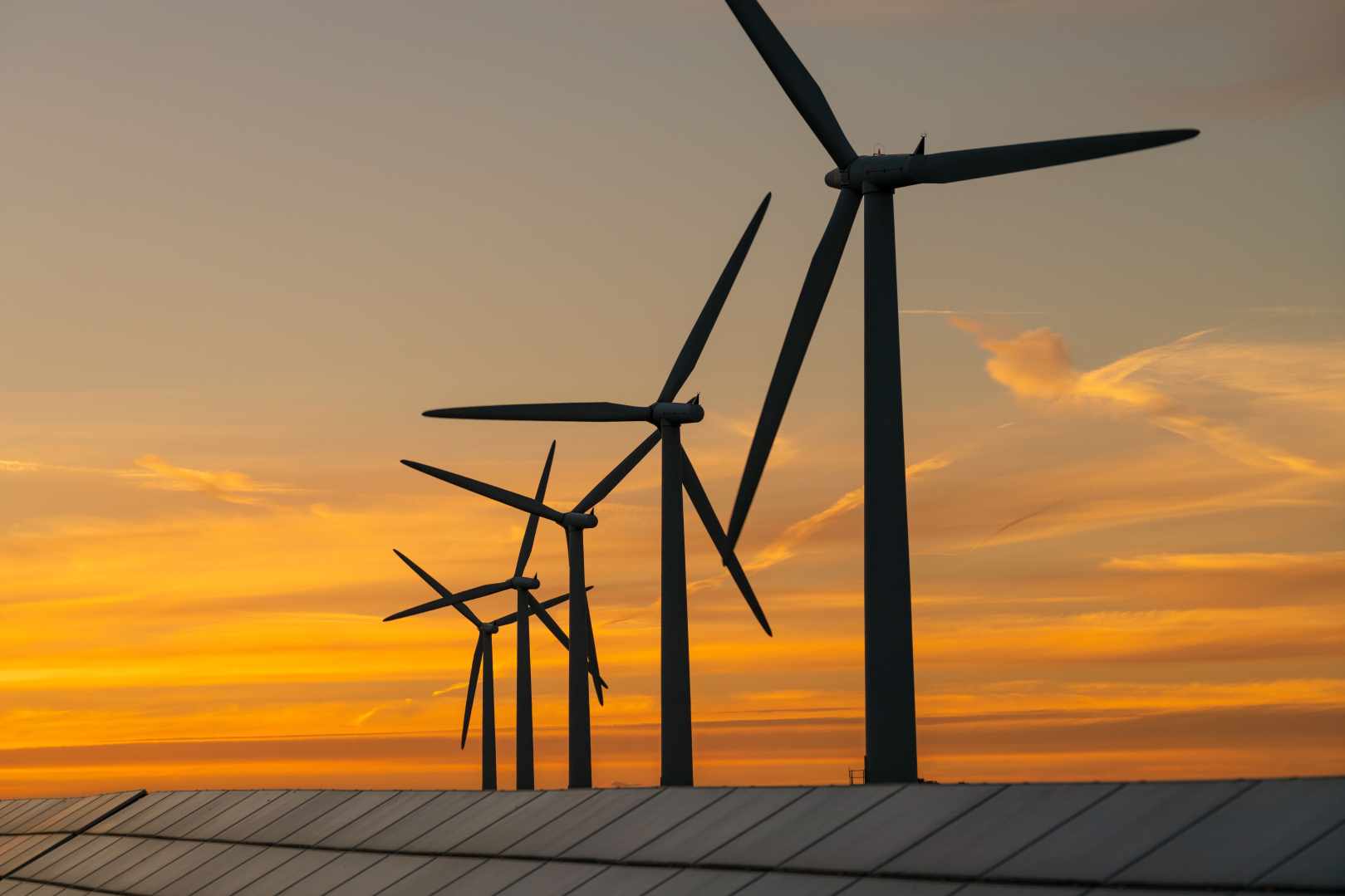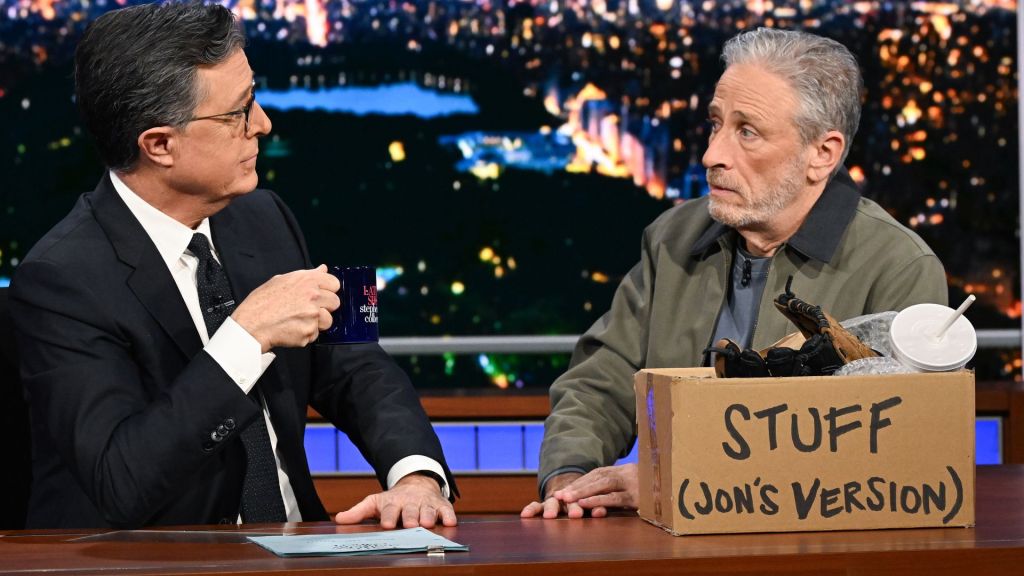
Commentary
-
Our commentary partners will help you reach your own conclusions on complex topics.
For the first time, renewable energy is producing more electricity than coal in the U.S., thanks largely to the growth of wind and solar energy. Metro areas like Chicago, Denver and Dallas-Fort Worth are surrounded by wind and solar potential which will give them an advantage over cities like New York, Berlin, and London, as Straight Arrow News contributor Peter Zeihan explains.
Excerpted from Peter’s April 19 “Zeihan on Geopolitics” newsletter:
What do Chicago, Denver, and DFW all have in common? Yes, they are all major metro areas in the U.S. but more importantly, they’re co-located with green energy sources. As the world adopts more and more clean energy, these regions with localized energy sources will have a huge leg up on places like New York, Berlin, and London.
Finding a metro (where people actually want to live) surrounded by wind and solar potential is rare … it just so happens that the U.S. is home to most of these regions. For places not so geographically blessed, the main concern becomes transporting the power from the source to the city. This can often span hundreds, even thousands of miles, and that distance puts up a number of red flags.
There are the obvious concerns of transmission loss, equipment, and overall economic viability, but once you start transporting power across states and grids, you have to deal with regulatory issues as well. The federal system in the U.S. means that national, state, and local governments all share power. So transporting energy is no simple task.
It will take an act (or two or three) of Congress before the flow of green energy is freed up; that’s not going to be a quick process. The metros with green energy sources nearby will have a huge advantage in the years to come. So if you need a place to move, I hear DFW could use a few more green-friendly folks.
Everybody, Peter Zion here coming to you from very chilly Northern Illinois. Behind me, of course, we have a wind turbine, which is one of literally hundreds in the immediate area around me. We are at the edge of the Great Plains here. I mean, technically, yes, we’re in more of the Midwest, but we are in one of the world’s great wind zones, Great Plains going into the northern Midwest is all pretty good wind space. And what is unique about this turbine in particular is it is supporting the metro region that is the Chicagoland zone, which is the fourth largest metro in the United States. In most places of the world, it doesn’t matter what continent you’re on what country are in, it is very rare for there to be good wind or solar potential near a major metro. And so even if you are able to build out the system to generate the power, then you have to transmit hundreds, maybe even 1000s of miles. Chicago is one of the handful of cities in the world. That is an exception to that rule. Northern Illinois, especially Northeastern Illinois, you’ve got decent wind right at the doorstep of the metro zone. And so you don’t need high voltage lines in order to transmit the power up to the urban section. Effectively, you can use more low lower load bearing facilities and equipment. And that means that Chicago is able to reach out not just to Northern Illinois, but also southern Wisconsin, eastern Iowa, something a little bit of western Iowa, and into Ohio as well, in order to generate electricity. Now, there are very, very, very, very few places in the world where this works, but most of them are in the United States. So my adopted hometown to Denver is at the edge of the Great Plains great wind zone. Phoenix is obviously at the heart of a great solar zone assets Albuquerque, and Dallas, Fort Worth is probably the American Metro that has the most green potential of all because it’s where the Great Plains meet the southwest. And so Dallas Fort Worth is likely to be the first major American Metro zone to go 100% Green, despite the fact that there are only like four environmentalists in the entire metro zone. Now, if you’re going to try to make a green impact, it’s very important to co locate power with your urban centers, because it’s very rare anywhere in the world to locate power generation more than 500 miles because at that point, the transmission loss becomes so high that it’s really not worth it from an economic point of view anyway. And in the United States, we’re one of the very few places that actually has some Metro zones that meet those criteria. But you can’t do that in New York, you can’t do that in Toronto, you can’t do that in Paris, you can’t do that in Berlin, or London or Moscow or Beijing. It’s really only in the United States where we have that colocation. If you don’t have that colocation, then you have to have high voltage lines that are designed for long range transmission, and those are not cheap. Now, in most countries, you have a unified power grid, the United States is not in most countries, we do things a little bit differently. Most of our utilities are set at the state or even local level. And that means if you want to transmit power from say, Utah to Los Angeles, you have to cross through different states regulatory authorities, and each of them have their own rules for transmission and for even just raising the capital to do it in the first place. And God forbid, you want to cross between different grids because the United States has three, roughly everything west of the Rockies is on one roughly everything east of the Rockies is on another and then of course, Texas is its own thing. If if if the goal is to decarbonize the power system, not only do we need a lot of solar and wind, we would also need several acts of Congress that would break down the regulatory burdens that exist across these different grid systems and across the different states and across the different municipalities. The problem the Americans face is that the United States is a federal system where the national government, the state governments and the local governments all share power, they all have about the same amount. And Congress would need to break that down within the power sector in order to encourage a more unified grid space that allows green electrons to travel more freely. That would trigger dozens of lawsuits from the state and localities which would rightly challenge the power grab from the federal government, which means at least in the near term, the next decade, maybe two, most of the stories for green power penetration into the American grid have to happen at the local level. And that gives cities like Chicago, Albuquerque, Phoenix, Denver and of course, Dallas Fort Worth a huge leg up over everyone else who’s local electricity resources when it comes to green tech simply aren’t that great. Okay, everybody. That’s it for me. See you next time.
-
Hurricane Helene hits US coast, Appalachia and beyond
Hurricane Helene hit Florida and Georgia overnight between Sept. 26 and 27 as a Category 4 hurricane, and accompanying storms will continue reaching deeper into the continental United States today. Dangerous flash flooding from the hurricane, known as storm surge, was some of the worst flooding that the Tampa Bay area has ever seen, and… -
Israel holds upper hand against Lebanon, Hezbollah and Iran
On Wednesday, Sept. 25, Hezbollah launched a ballistic missile at Tel Aviv in retaliation for Israel’s explosive pager attack that blew up devices across Lebanon. Although Israel’s defense systems intercepted the surface-to-surface missile, the attempted strike on Tel Aviv marked a significant escalation by Hezbollah. Since the siege on Gaza began, shortly after the Oct. 7, 2023,… -
The Sinaloa Cartel civil war
Fears of a civil war within the Sinaloa Cartel are growing as violence between competing factions within the cartel continues. The Mexican Army has dispatched around 600 elite troops to Sinaloa to help quell those fears, in addition to roughly 2,200 regular soldiers and National Guard. Watch the above video as Straight Arrow News contributor… -
New Ukrainian weapons hit Russia where it hurts
Ukrainian drones struck a major Russian ammunition depot, triggering a massive explosion that was captured on camera. According to the Ukrainian military, 2,000 tons of munitions had arrived at the depot before the attack. Over the past two years, Ukraine has significantly increased its domestic drone production, allowing it to scale up attacks on military… -
Weighing social costs vs. economic benefits on immigration
Global human migration is one of the defining elements of our current historical era, according to the United Nations. Migrants face both the incentives to leave — forced out by climate change, crime and corruption, extreme poverty or violence — and incentives for where to go, based on available job opportunities and so on. Migration…
Latest Stories
-
 Getty Images
Getty Images
Putin says he will facilitate negotiations between Trump, Iran: Report
-
 Dept. of Defense
Dept. of Defense
A return to the Cold War? UK poised to house US nuclear weapons yet again
-
 Getty Images
Getty Images
Melania Trump backs ‘Take It Down Act’ targeting AI deepfake, revenge porn
-
 Getty Images
Getty Images
Top FBI official in NY retires amid apparent conflict with Trump admin
-

How US crypto holdings compare to other nations
Popular Opinions
-
In addition to the facts, we believe it’s vital to hear perspectives from all sides of the political spectrum.
Latest Opinions
In addition to the facts, we believe it’s vital to hear perspectives from all sides of the political spectrum. We hope these different voices will help you reach your own conclusions.
The opinions published in this section are solely those of the contributors and do not reflect the views of Straight Arrow News.





















Latest Commentary
We know it is important to hear from a diverse range of observers on the complex topics we face and believe our commentary partners will help you reach your own conclusions.
The commentaries published in this section are solely those of the contributors and do not reflect the views of Straight Arrow News.
Dr. Frank Luntz
Pollster and Political Analyst‘Biased’: What Americans think of ‘mainstream media’
‘Getting rid of them’: Americans discuss Trump and immigration
‘Woke’: Why some Biden 2020 voters backed Trump in 2024